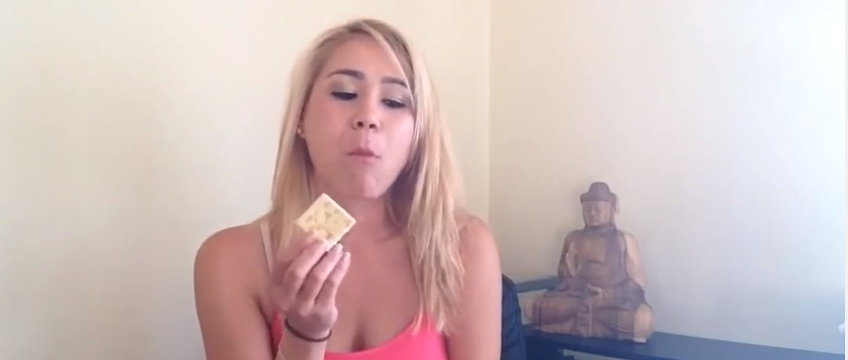
Young people have always dared each other, but the Internet has significantly helped these dares and challenges gain attention and even go viral. All of this visibility raises the stakes since thousands or even millions of people can see them – not just their friends.
The list of challenges and fads that have swept the Internet over the past six years seem endless: the widely popular Cinnamon Challenge, the Fire Challenge, the Milk Challenge, the Salt and Ice Challenge, the Banana Sprite Challenge and so many more.
Some are seemingly harmless, such as the ALS Association Ice Bucket challenge, which is positive and has been used to bring global awareness about Amyotrophic Lateral Sclerosis — the disease that Terrence Howard’s character, Lucious Lyons, was initially diagnosed with on the hit series “Empire.” However, hazardous pranks have caused life-threatening injuries, particularly the Fire Challenge.
The question many ask about other challenges is, “What could possibly be so hard about eating a spoonful of cinnamon or six crackers?” Well, doctors advise people not to do either, because such challenges end up having more serious effects than one might think.
Dr. Gaylord Lopez, the director of The Poison Control Center in Atlanta, has seen an influx of patients calling in because of challenge-related injuries.
“It looks innocent, but you are literally drying up the throat area,” Dr. Lopez said. “We’ve seen lung damage, even collapsed lungs. It can be life threatening, especially for people who already have health risk factors like those with asthma or smokers.”
Here’s a sampling of popular challenges:
The Fire Challenge
The Fire Challenge has grown in popularity, particularly among people ages 14 to 21. As a video recorder rolls, people set themselves on fire by dousing an area of their body with a flammable liquid, usually hand sanitizer or rubbing alcohol. When lit, the liquid produces a vividly colored flame that the participant tries to douse in a pool or shower. A video of the experience is posted on YouTube.
A 15-year-old in Corpus Christi, Texas, attempted the challenge in November and was hospitalized for second-degree burns all over his body. James Brown, chief of the Corpus Christi Fire Department, recalls the incident and advises others not to try it.
“Well, the biggest concern is that people may not be aware of what can happen,” Brown said. “One, you can actually be killed when doing that, and you are putting other people in danger, also.”
Another teenager, Jacob Keefer of Santa Barbara, Calif., is “clinging to life” in the burn unit at the Los Angeles County-University of Southern California Medical Center. “He was splashed with lighter fluid that immediately set flames to the upper half of his body,” according to organizers of a crowd-funding campaign. “This includes his waist, chest, arms, hands, face and neck.” The campaign has raised about $45,000 of its $60,000 goal toward the teenager’s medical expenses.
In Charlotte, N.C., police charged a mother with contributing to the delinquency of a minor after helping her 16-year-old son videotape himself lighting nail polish on his body last year. He experienced chest and neck burns, according to the Charlotte Observer.
Brown pointed out that since there is no proper way to attempt such a dangerous challenge, that it’s best to avoid it completely. The flame from the challenge could spread to another object and start a house fire.
“If there is a house fire, it is important to contact your local fire department immediately and refer to the basics: stop, drop and roll,” Brown advised.
“If you try this challenge and your clothes catch on fire, you must smother the flames by rolling on the ground. If your house catches on fire and your clothes did not, remember to stay low and find the nearest, safest exit.”
The Saltine Challenge
The Saltine Cracker Challenge, or simply The Saltine Challenge, became a huge trend after several students at Indiana University posted a video of themselves attempting it on YouTube in early 2008. The Huffington Post calls it the “godfather” of the challenge craze.
In this challenge, a contestant attempts to eat six saltine crackers within 60 seconds. Sounds easy enough? The actual challenge is that the contestant cannot drink any fluids within the 60-second span, which usually induces vomiting. Whether participants are successful or not — usually not — they are then to post their video on a social networking site, most popularly YouTube.
After hundreds of people posted their attempts, others followed suit. The phrase “Saltine Challenge” yields 82,200 results on YouTube, with 907,000 results for “Cinnamon Challenge.”
Kenyata Johnson, 20, from Acworth, Ga., remembers her attempt.
“I tried it once with my little brother,” Johnson said. “I choked and felt light-headed, but I was successful.”
“I didn’t think about recording it the first time, so I tried a second time in front of the camera, but I couldn’t do it,” she recalled. “Maybe I was thirsty before, because the first time I drank a lot of water before starting.”
This particular challenge doesn’t pose an obvious threat like the Fire Challenge. However, the “Saltine Challenge” poses risk since the tongue swells because of the spike in sodium, Dr. Lopez said. It is especially dangerous when the participant is dehydrated, and people are often unknowingly dehydrated.
The Cinnamon Challenge
In late 2010, The Cinnamon Challenge gained popularity in a similar way. The spinoff began when a set of teenage boys posted a YouTube video of an unsuccessful attempt to ingest a tablespoon of cinnamon without drinking any water. The video had more than 20 million views.
The Cinnamon Challenge poses an even bigger risk than the Saltine Challenge. For one, the chances of inhaling the cinnamon are very high. Once trapped in the lungs, it is impossible to remove the spice, and doctors are not yet certain what complications this can cause.
Despite the risks, thousands continue to partake in these precarious activities even though they can clearly see the discomfort of the people in the videos.
“We try to advise people that this is dangerous, this can cause problems and you don’t want to be a statistic,” Dr. Lopez explained. “Like anything in this world, the higher the dose, the higher the problem. When you eat cinnamon as called by recipes, there’s no problems. But when you are taking a spice in large doses, especially not mixed in with anything, it poses a great risk.”
The Ice Bucket Challenge
Not all challenges are negative. Social networking has helped to spread positive messages and activities that might not have received such attention otherwise. Facebook, Instagram, YouTube, Twitter and other social media outlets have been filled with people ranging from children to high-ranking celebrities such as Oprah Winfrey doing the Ice Bucket Challenge.
The challenge consists of someone dumping a bucket filled with ice water over a person’s head. At the end of each video, the person “challenges” someone to accept the ice-cold bath. If they decline, they must donate money to the ALS Association. Amyotrophic Lateral Sclerosis, or ALS, is a degenerative disorder that affects the nerve cells in the brain and spinal cord. Those affected will gradually lose their motor skills, which eventually leads to death.
The Ice Bucket Challenge has not only brought awareness to ALS, but it has also raised research funds. Each person selected to do the challenge must donate $10 if they perform the challenge, or $100 if they choose not to. With the challenge fueled by the Internet, the ALS Association reports that it has raised at least $115 million.









Recent Comments